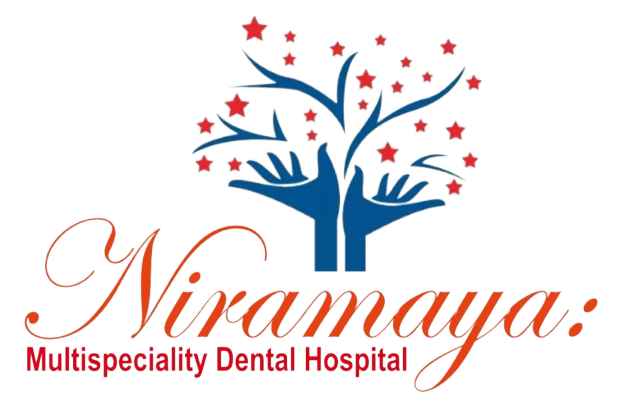Ask the Experts
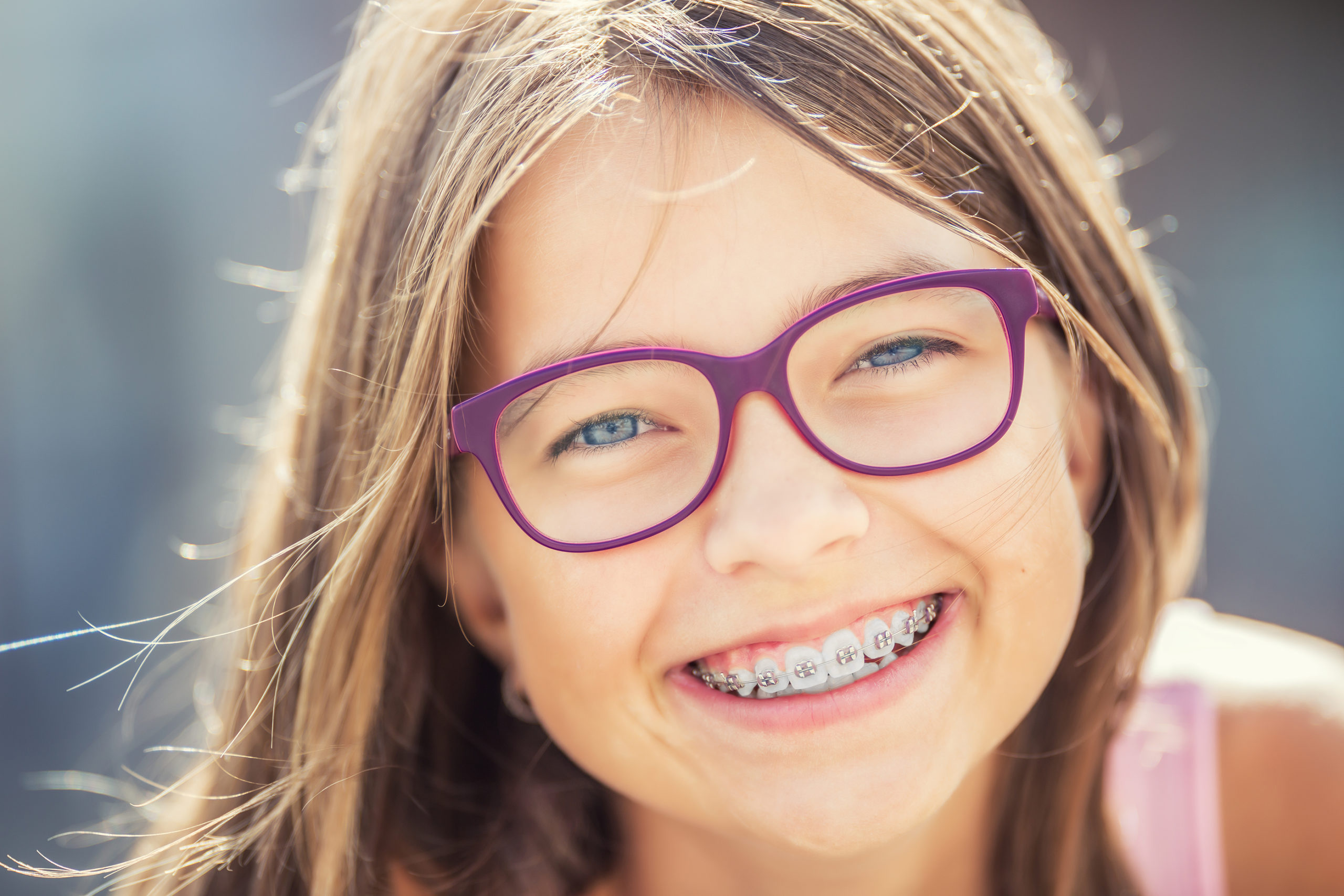
Orthodontic treatment
Orthodontic treatment is a way of straightening or aligning your teeth, to improve the appearance of the teeth and how they work. In long term it also helpsin maintaining health of your teeth, gums and jaw joints, by even distribution of the biting forces over all your teeth.
A specialist known as an orthodontist is the right person to consult for your orthodontic treatment. These specialists after completing 5 years of BDS (Graduation) go another 3 years of extensive training to complete their Orthodontics post graduation (MDS).
Need of Orthodontic treatment
Many people have crowded or crooked teeth. Orthodontic treatment will straighten the teeth or move them into a better position. This can improve their appearance and the way the teeth bite together.Crooked teeth can be harder to clean, which can lead to tooth decay or periodontal disease.
Some people have upper front teeth that stick out and look unsightly. These large upper teeth are more likely to be damaged, but orthodontic treatment can move them back into line. Or the way the upper and lower jaws meet can cause teeth to look unsightly and lead to an incorrect bite. Orthodontic treatment may be able to correct both of these problems.
You might think that straightening your teeth only has aesthetic benefits, but that is farther from the truth. Teeth that don't fit correctly can make it harder to chew, leading to headaches, shoulder or back pain, and even temporomandibular joint (TMJ) disorders.Orthodontic treatment can help you to bite more evenly and reduce the strain.
Age for Orthodontic treatment
The best time is generally during childhood. Orthodontic treatment broadly includes correction of skeletal discrepancies & correction of dental irregularities. During the growing age form 6-12 years if any irregularity is noticed in child like:-
- Large upper front teeth,
- Upper jaw/ teeth placed too forward,
- Lower jaw placed too backward or forward, ,
- Child having thumb sucking habit at this age also,
- Child unable to bite or chew properly.
In addition to above issues if any other skeletal or dental abnormality present in this age group is altering the facial look of child, you must consult Dr Animesh Pandit, MDS (Orthodontics & Dentofacial Orthopaedics) our orthodontist. If any skeletal issue is diagnosed in child at an early age it can rectified by various orthodontic appliance during growth phase only so that the child can be saved from more complicated fixed orthodontic or orthognathic surgical treatment in future. Once the child crosses the age of 13-14 Years and all permanent teeth have erupted fixed orthodontic braces treatment can be done.
Now a days adults can have orthodontic treatment too - and more and more are doing so. Age is less important than having the right number of teeth. In children it may be necessary to wait for enough teeth to come through before starting treatment.
Qualified Orthodontist
You must understand that as for a cardiac surgery there is a cardiologist, for an eye surgery there is an ophthalmologist similarly for orthodontic treatment there is a qualified Orthodontist & Dentofacial Orthopaedician. At Niramaya Multispeciality Dental hospital Dr Animesh Pandit is our qualified Indian Orthodontic society endorsed Orthodontist. Dr Animesh Pandit has more than 10 years of experience & successfully treated 700+ patients orthodontically.
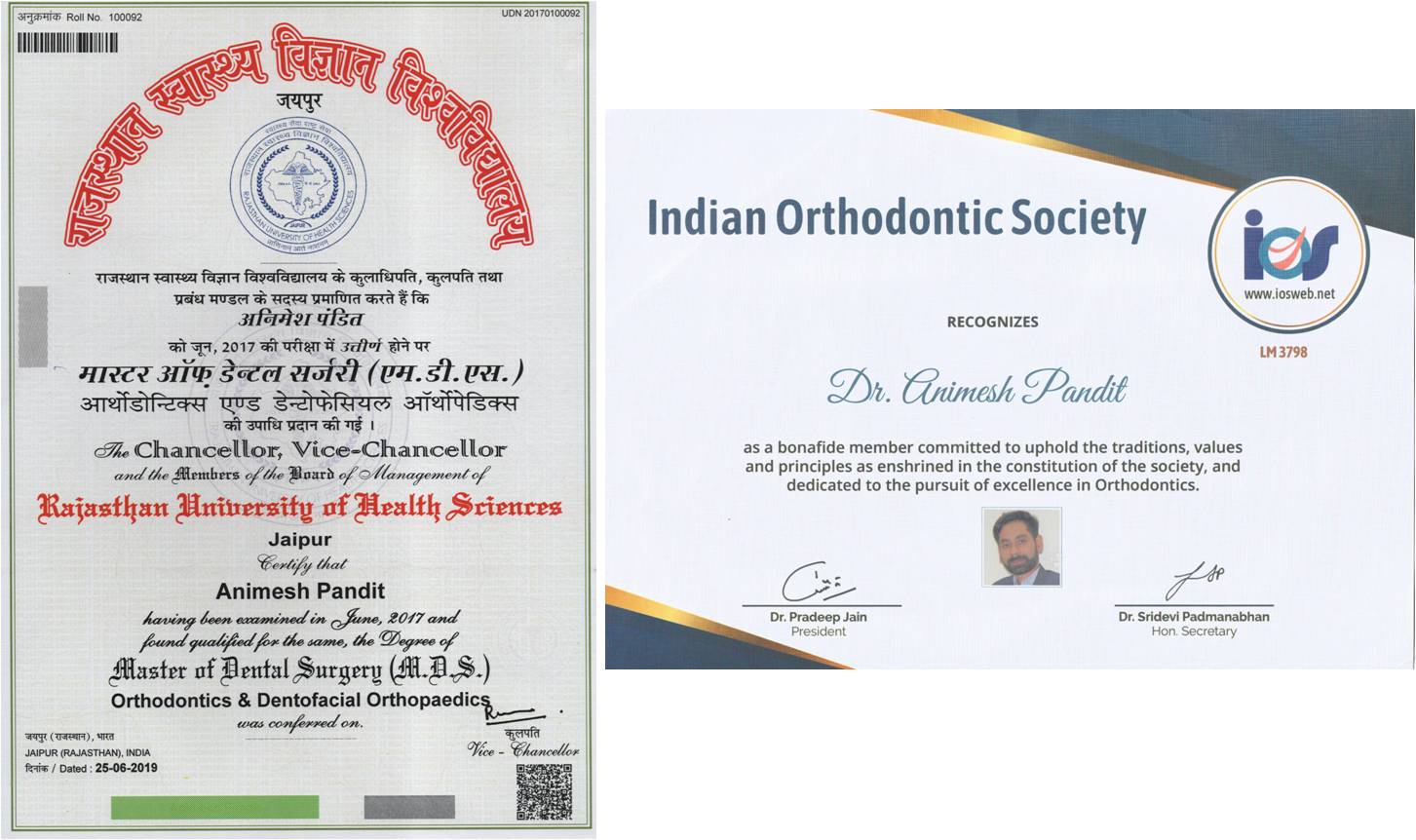
Problems orthodontists can fix
While each of us has our own unique set of teeth, there are some common problems many of us may experience. Fortunately, our orthodontist is trained to treat each of these problems and do so with great results.
Here are the most common types of orthodontic problems:
-
Crowding
Crowding of the teeth is the most common problem associated with the need for orthodontic treatment. Many factors contribute to dental crowding. The most common reason for crowding is a discrepancy between the space available in each jaw and the size of the teeth. Crowding can lead to impacted teeth, a “bad bite”, and an unaesthetic appearance.
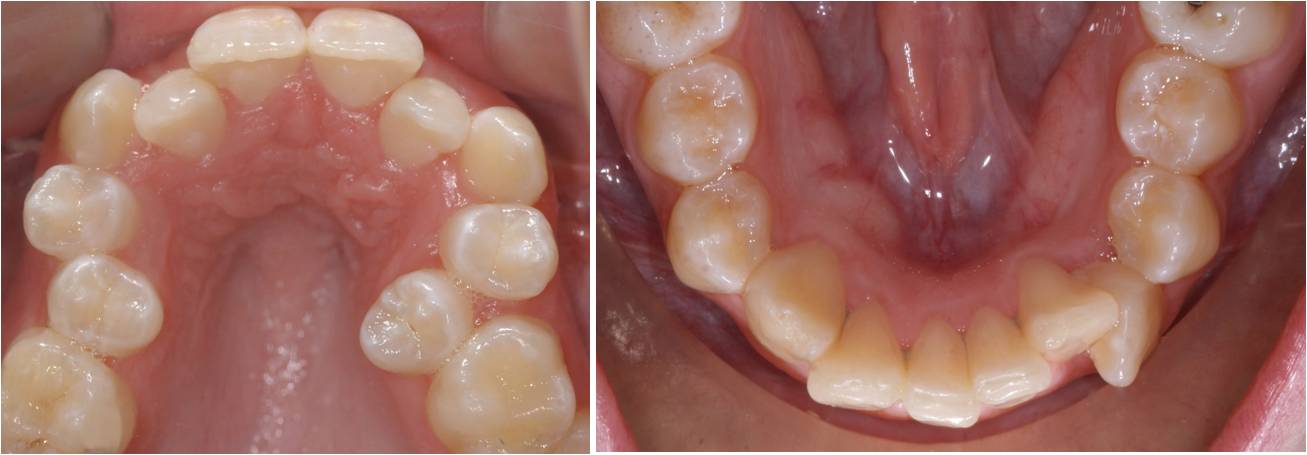
-
Spacing
Spaces between teeth are another common problem associated with the need for orthodontic treatment. Like crowding, spacing is also often caused by a discrepancy between the space available in each jaw and the size of the teeth. Spacing can also arise from teeth that are missing or are smaller than normal.
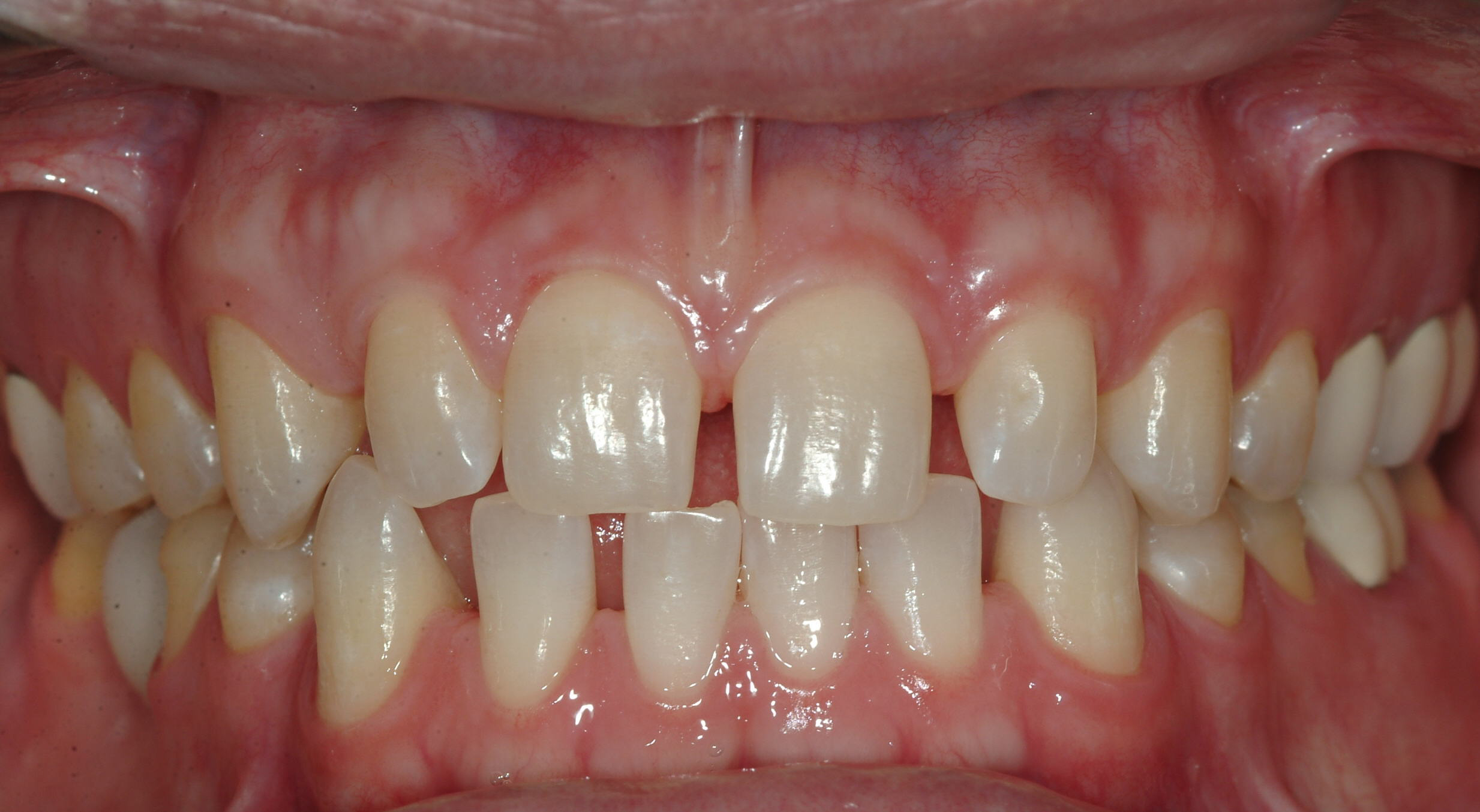
-
Protrusion/ Overjet
Overjet is defined as the horizontal protrusion of the upper teeth in front of the lower teeth. Overjet is often seen with a Class II malocclusion, which occurs when the top jaw is located ahead of the bottom jaw (due to a large top jaw, a small bottom jaw, or a combination of the two). Thumb and finger sucking habits can also cause excessive overjet.

-
Reverse bite
The opposite of protrusion is a reverse bite. This refers to the condition where the bottom front teeth sit out more than normal. This means the bottom teeth will sit in front of the top teeth when you bite. This may also be known as an underbite or lower jaw protrusion.
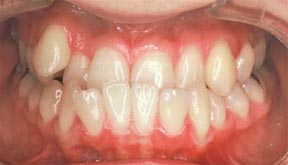
-
Open bite
An open bite is defined as a lack of vertical overlap of the incisor (front) teeth. An open bite can be caused by abnormal growth of one of both jaws or it can be caused by a thumb or finger sucking habit. In some instances, a tongue thrust (which occurs when the tongue moves between the front teeth during swallowing) may also be a contributing factor to an open bite.

-
Crossbite
A crossbite occurs when one or more of the lower teeth sit outside the upper teeth, usually along the side of your jaw.
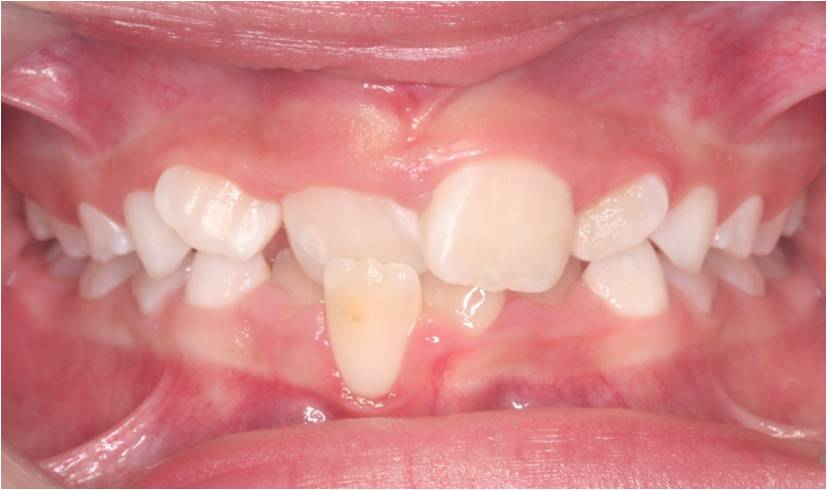
-
Overbite-Deep bite
Overbite is defined as the vertical overlapping of the upper teeth over the lower teeth. A deep overbite (or deep bite) occurs when the upper front teeth completely (or mostly) cover the lower front teeth. Often, this causes the lower front teeth to bite on the gums behind the upper front teeth, causing damage to the gum tissue and underlying bone.
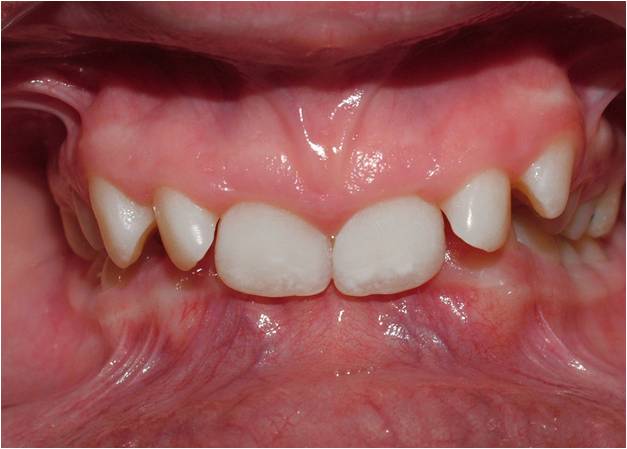
-
Trauma from Occlusion
Tooth wear occurs when tooth are not in their correct anatomical position. Either due to severe crowding or due to deep bite the teeth collides with each other every time during opening & closing of mouth. This in long term causes damage to opposing teeth leading to their attrition, periodontal disease & sometimes fractures also.
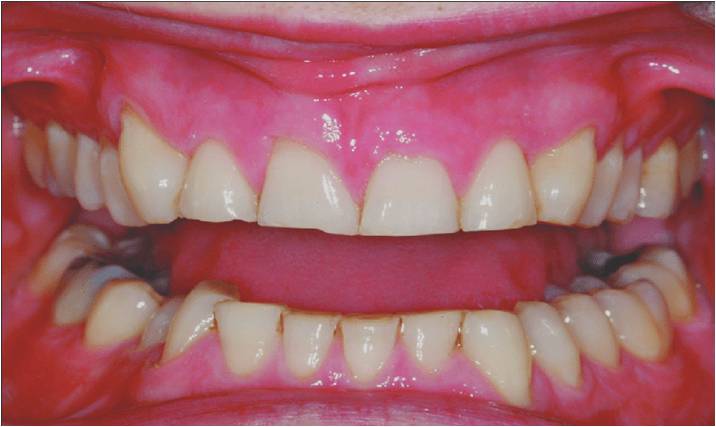
-
Periodontal disease
Periodontal disease refers to disease of the gums. This can be in the form of inflammation, also known as gingivitis, or more serious conditions that affect the bone and tissue of the gums.

Start of treatment
The most important thing is to have a full examination. This will usually involve looking at your teeth, taking dental X-rays (OPG & Lateral Cephalogram), taking photographic records & making plaster models of your teeth. Our orthodontist will then discuss what treatment is possible. Once you are sure you want to go ahead, the treatment can be started.
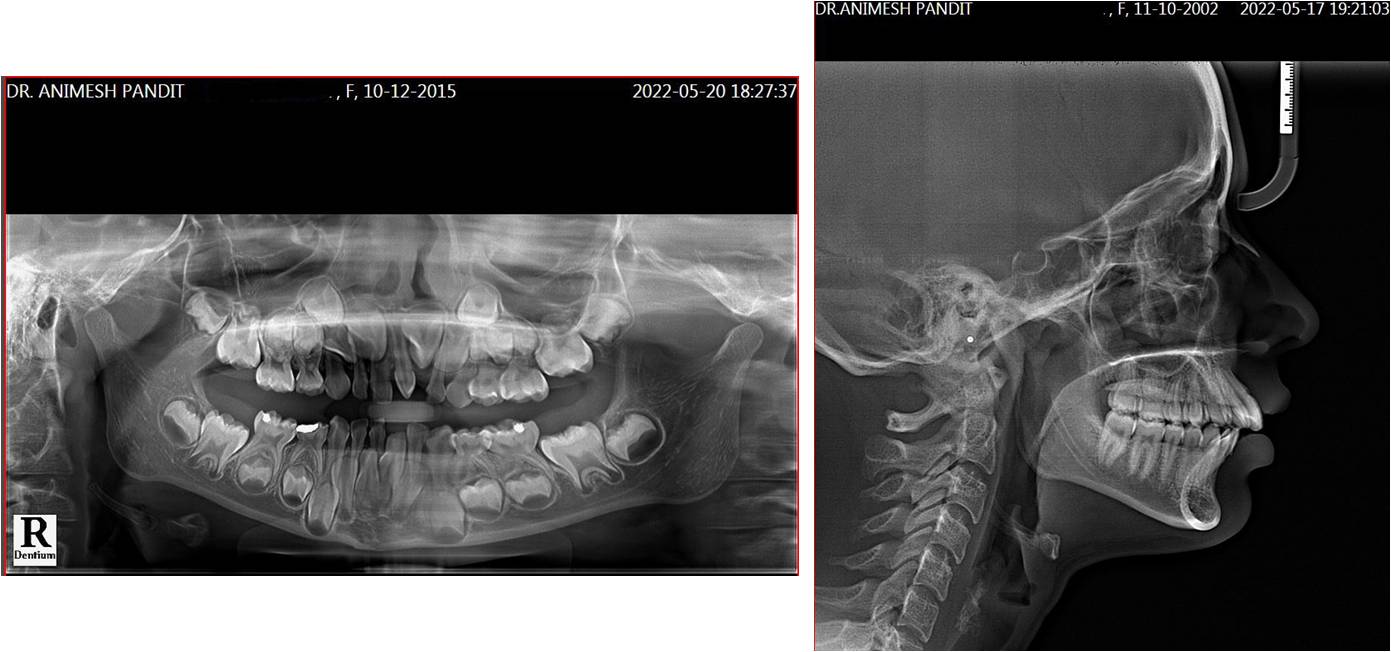
Types of treatment:-
A) In Young children “Growth Modification” (Age 6-13 Years)
As part of the interceptive orthodontic process, growth modification treatment is utilized in the first phase of two-stage orthodontic treatment for children with misaligned teeth, jaw bones and bites. It is most effective during a child’s growth spurts, when bones are still in the growing process.
Growth modification appliances (Bionators Bite Blocks) are used to correct the shape, position or width of the jawbone(s).
Although orthodontic care can straighten teeth at any age, there is an optimal time period to begin jaw growth modification. The younger your child, the more ideal the treatment outcome. Early mixed dentition, which is marked by the emergence of the secondary teeth at the ages of 6 to 7, is considered the optimum age for most types of malocclusion. When growth modification is properly utilized, a severe problem that might require corrective surgery in the future can be corrected in a non-invasive and gentle way.
Growth Modification can be used to effectively treat the following:
- Facial Asymmetry
- Teeth Crowding (without extractions)
- Cross Bites
- Open Bites
- Overbites
- Underbites
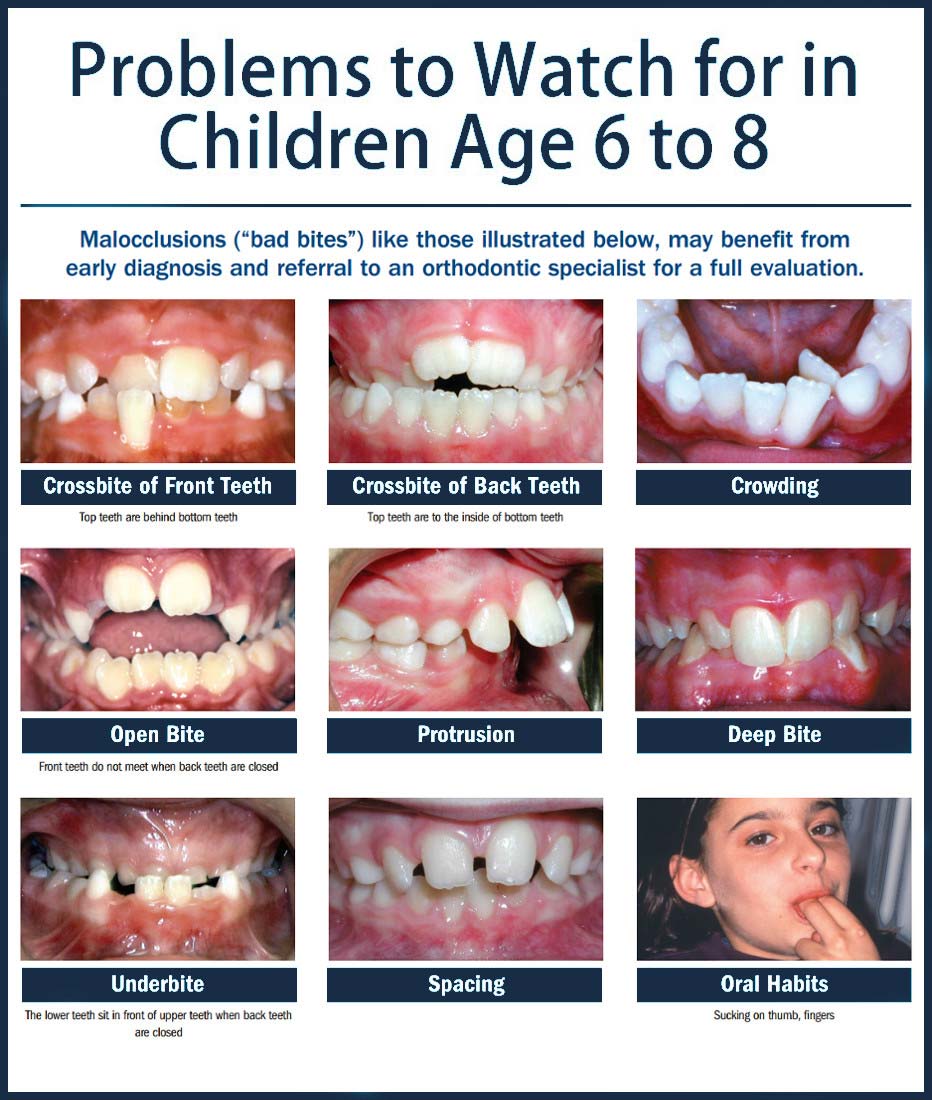
B) In Children & Adults ( Age 13 Years Onwards)
Once the child has completed groeth phase or hit his/her puberty than no growrh modification therapy can be given. Now only dento-alveolar changes can be made. This type of treatment is done by the help of Fixed orthodontic Appliance (Braces).
Types of Braces
Traditional braces are the most common type of braces world-wide and have been around for over 100 years now. In the past, braces were very bulky and noticeable. Luckily, braces today are nothing like what they were 100 years ago. Advances in innovation and technology have made braces:
- Smaller
- Faster
- More Comfortable
- More Effective
There are 6 main types of braces available today:
- Metal braces
- Ceramic braces
- Clear Braces
- Self-ligating braces
- Lingual braces
- Clear aligners like Invisalign
Metal braces
Metal braces are most popular among children and adolescent patients. They work by applying the braces to the teeth and connecting them with a wire. The wire is tied to the braces using elastic ties, which come in an array colors to choose from. To move the teeth, the orthodontist makes adjustments to the wire at your appointments every 4-5 weeks.
These brackets once fixed cannot be removed during treatment, some parents and patients love metal braces because they do not need any kind of patient compliance of wearing or removing it. However, metal braces require care and attention and good oral hygiene is a must throughout treatment.
Pros
- Efficient and versatile
- No speech changes
- Appointments every 4-5 weeks
- Fun if you want colors
- Less reliant on patient compliance than
- No waiting period to get started
- Most affordable
Cons
- Difficult to brush and floss
- Most noticeable esthetically
- Not for patients with poor oral hygiene
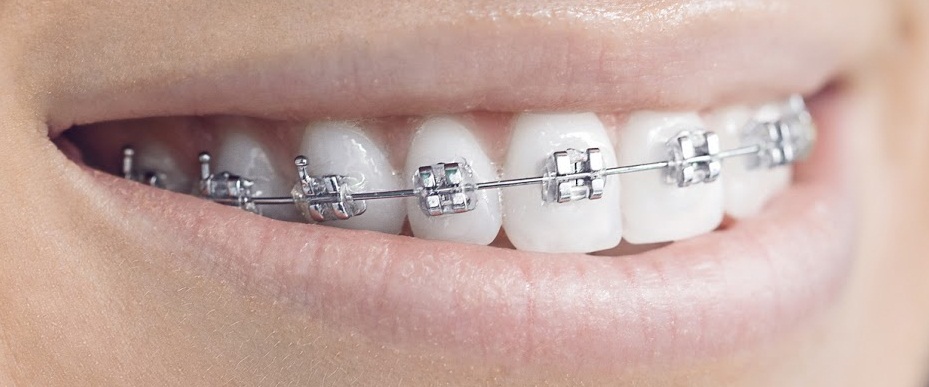
Ceramic Braces
Ceramic braces are braces made of tooth colored material. They work in the same way as metal braces, but are more discreet and less visible. Ceramic braces are most popular among patients who do not want too much of public visibility of their braces, but who still want to straighten their teeth in a discreet and affordable way. These patients tend to be esthetically-driven adolescents and adults.
Compared to metal braces, ceramic braces are less noticeable and present an affordable alternative to metal braces. You should know, however, that these braces are also slightly larger than metal braces and can stain depending diet and brushing habits. In these also wire is tied to the braces using elastic ties& transparent/white elastic ties over a period of time gets yellowish stained due to food/ beverage intake. They are not for everybody, but we believe they remain a valuable tool in our orthodontic tool-bag.
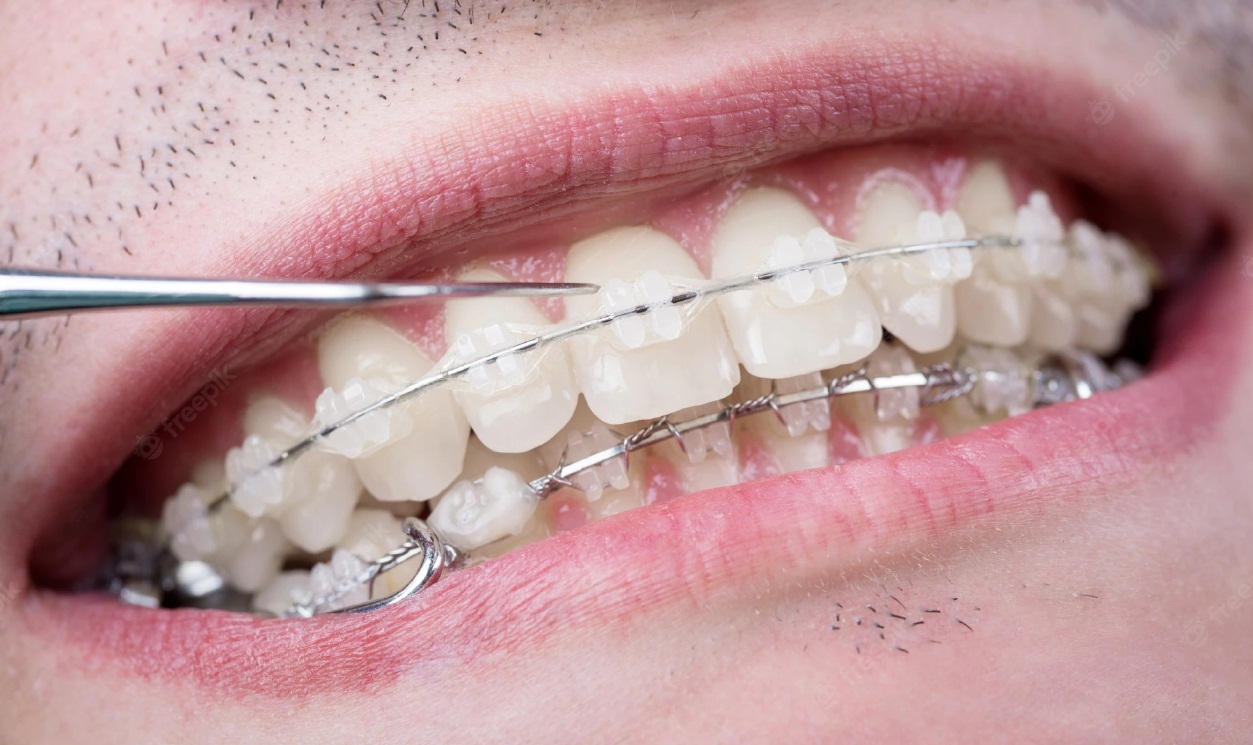
Clear Braces
Clear braces also known as resin braces are more transparent than ceramic brackets. These braces have crystal clear transparency, fracture resistant hybrid resin more resistant to stains and abrasion. It shows better sliding mechanics than stainless steel braces. But again here also wire is tied to the braces using elastic ties& transparent/white elastic ties over a period of time gets yellowish stained due to food/ beverage intake.
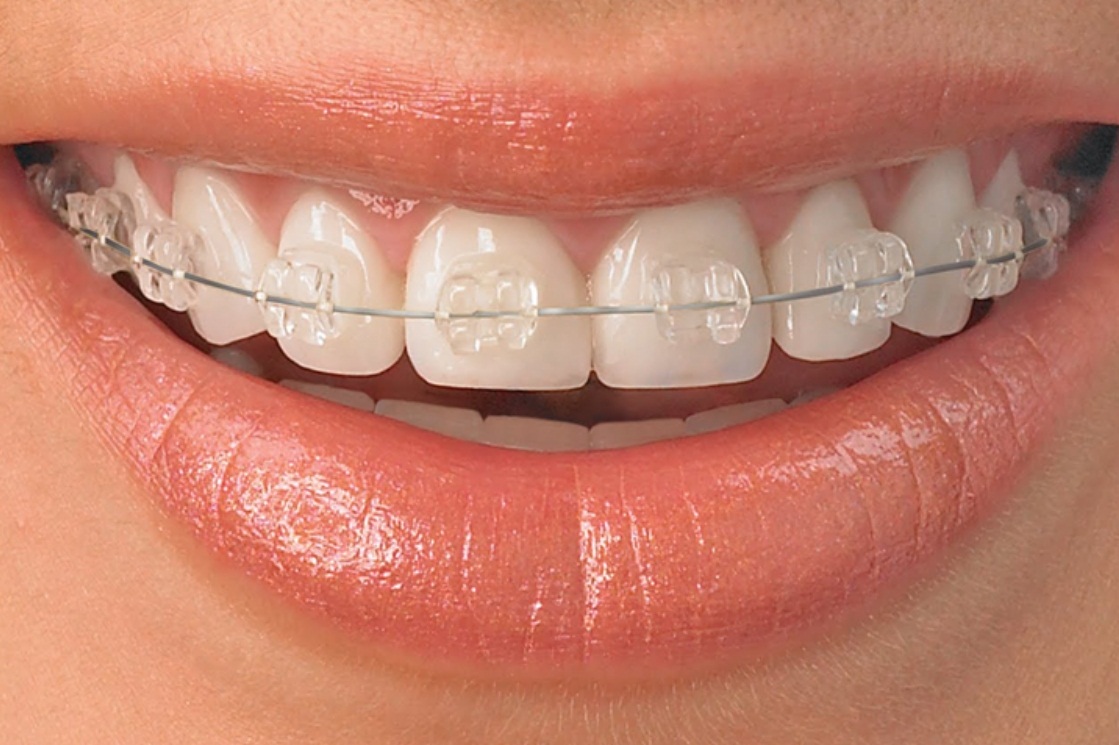
Self-ligating Braces
Self-ligating braces work similarly to metal, ceramic or clear braces. These are available in metal, clear &ceramic material. They too rely on braces and a wire to move the teeth. The difference between self-ligating braces compared to metal, ceramic or clear braces is that self-ligating braces use doors or clips to hold the wire in place, rather than elastic rubber ties. Thus the yellow staining that is prominent in elastic ties supported braces is not found here.
We have found that self-ligating braces result in mildly shorter appointment times because of how easy they are to adjust. They are therefore a good choice for:
- Patients who are more sensitive to discomfort
- Patients who cannot sit still in the dental chair for very long
- Patients with developmental delays and orthodontic need.
- Patients with inability to come on 4-5 week regular visits.
- Patients very much concerned over visibility of braces.
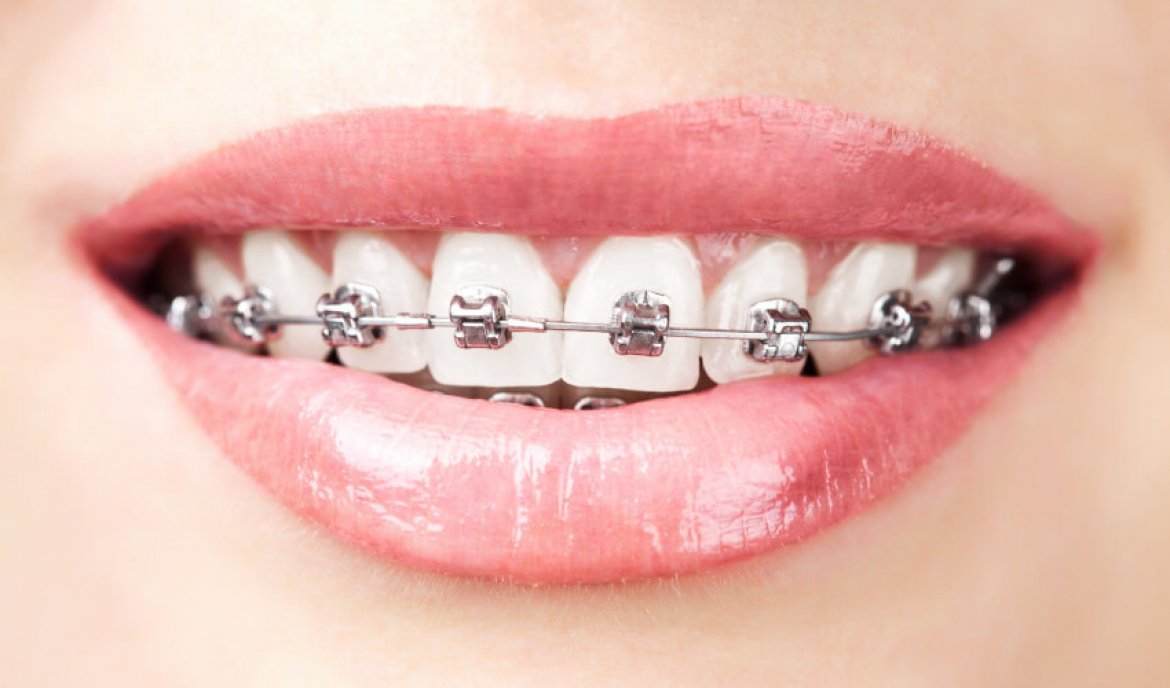
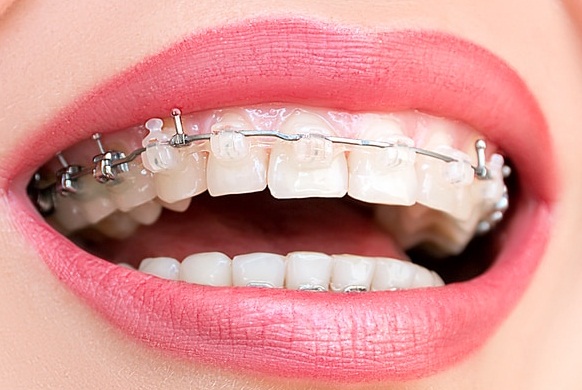
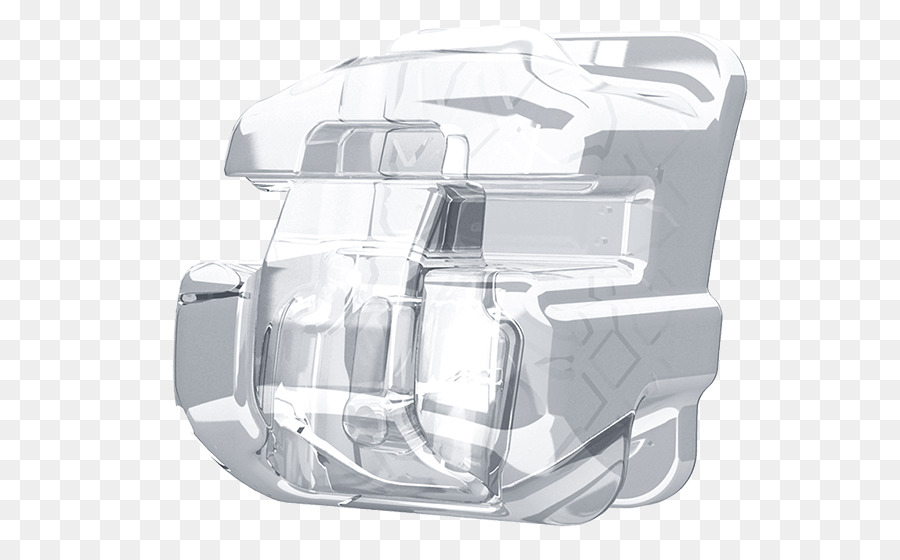
Lingual Braces
Lingual braces are present behind the teeth are the most specialized and least common orthodontic system on the market. This is because they require extra time for bonding & adjustment to the patient. We believe that lingual braces behind the teeth should be presented as an option to all eligible patients but which the latest advances in the field of braces much better options are available just to overcome the braces visibility issue.
There are some things you should know before taking the leap! Because lingual braces are behind the teeth:-
- some patients experience slight changes to their speech (lisps are common)
- Irritation to their tongue.
- Difficulty in chewing as braces are in chewing zone
- Frequent ulcerations on tongue.

Invisalign And Clear Aligners
Clear aligners have seen a surge in popularity in the last decade. They were popularized by Invisalign in the early 2000s, which slowly became the largest brand of aligners. It is clear why clear aligners and Invisalign are so popular right now:
- Clear and transparent
- Removable
- Allow for easier brushing and flossing
- Require less appointments in some cases
- Shorter appointments are sometimes possible
Invisalign is great for patients who had braces when they were younger and just need a “touch up,” as well as for patients who have mild to moderate dental problems like misaligned teeth, large overbite, no jaw alignment problems, and who have gaps in their front teeth (open bite). But any clear aligner system including Invisalign has significant limitations compared to braces when addressing difficult problems or comprehensive treatments.
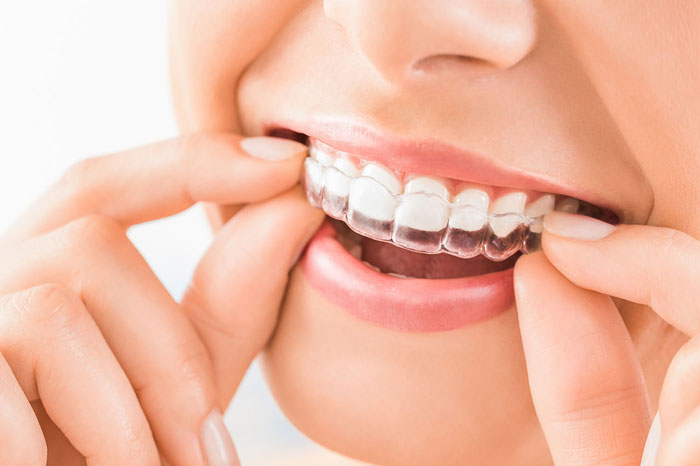
For more complex problems, traditional braces are the best. To know the option for yourself kindly consult our Orthodontist Dr Animesh Pandit, MDS (Orthodontics & Dentofacial Orthopaedics).
FAQs:-
Will I need extraction of teeth to make space?
You may not have enough space for all your permanent teeth. If so, in that case you may need to have get some of the permanent teeth removed to make space. Our orthodontist will tell you whether this is the case of extraction or non-extraction. Sometimes space can also be createdby using other methods.
How is treatment carried out?
Orthodontic treatment can be done by many sorts of appliances, which most people call a 'brace'.
What is a removable appliance?
Simple treatment may be carried out with a removable orthodontic appliance (a plate that can be taken out to be cleaned). It has delicate wires and springs attached, which move the teeth using gentle pressure.
What is a fixed brace?
Often, in complex malocclusion or irregularities teeth need to be guided more accurately than they can be using a removable appliance. So a fixed brace is used. This has brackets and bands which are temporarily stuck to the teeth. A flexible wire joins all the brackets and allows the teeth to be moved. You can't take the appliance out yourself, so it is called a fixed appliance.
What is a functional brace?
It is sometimes possible to change the way the jaws grow, using a functional brace. This works by using the power of your jaw muscles and can help with certain types of problem.
What are the brackets made of?
Fixed braces are not always made of metal. Plastic and ceramic can be used, especially for adults.
What is headgear?
As well as a brace some people need to wear headgear. You usually only need to wear it in the evening or at night. If you do not wear it in the way you have been told, your front teeth may stick out at the end of treatment.
What are 'invisible braces'?
They are tough, clear plastic 'aligners' (moulds) that are used to straighten teeth. Several sets of specially moulded, slightly different aligners are made for each patient. Each set is worn for two weeks before being replaced with the next one. They are made from clear plastic, so they are nearly invisible. This means that no one need know you are straightening your teeth.
The aligners should be worn for 22 to 23 hours a day for the best results. They can be easily removed for eating, drinking, brushing, and for cleaning in between your teeth. You need to have all your adult teeth before you can have this treatment.
What are elastics?
Sometimes delicate elastic bands are attached to a fixed brace to help move the teeth. Our orthodontist will tell you if you need elastics.
How long will it take?
The length of treatment depends on how severe the problem is, and it may take anything from a few months to two-and-a-half years. Most people can be treated in one to two years.
What happens when the teeth are in the right position?
When treatment is finished the teeth need to be held in position for a time. This is called the ‘retention' period, and the appliances that hold the teeth in place are called retainers.The retainers hold newly straightened teeth in position while the surrounding gum and bone settles. The retainers can be removable or fixed, depending on the original problem.
Will it hurt?
All appliances may feel strange at first, and can cause discomfort. If the problem doesn't go away, the orthodontist may be able to carry out adjustments to help. Teeth are usually uncomfortable immediately after a brace has been adjusted, but this will settle.
How many visits will it take?
Orthodontic braces usually need adjusting every 4 to 6 weeks. Our orthodontist will tell you how often your brace will need adjusting.
How successful will it be?
Success depends on both the skills of the orthodontist, and the enthusiasm and helpfulness of the patient (and parents, if the patient is a child). It is important to follow any instructions given by the orthodontist and to go to any appointments you have with them. The success of the treatment also depends on the commitment of the patient. For children's orthodontic treatment it is very important that the patient is as keen as the parent.
Can orthodontics damage my teeth?
Your teeth can be damaged if you don't look after them properly during treatment. The braces themselves will not cause damage, but poor cleaning and too many sugary foods and drinks can cause permanent damage to your teeth. Brackets, wires and braces can trap food and cause more plaque than usual to build up. So you need to clean your teeth and appliance very thoroughly.
Is orthodontic work permanent?
Even after retention, it is normal for minor tooth movements to happen throughout life. So no permanent guarantee can be given. However, it is unusual for teeth to alter enough to need more treatment.
How do I go about getting orthodontic treatment?
The first thing to do is to visit Niramaya Multispeciality Dental hospital, Ujjain here our Orthodontist Dr Animesh Pandit will let you know whether you need treatment and will make the necessary arrangements.
How do I care for my brace and teeth?
It is important to keep having your teeth checked while you are having orthodontic treatment. You also need to take extra care of your teeth and mouth:
- Clean your teeth carefully every day, including between your teeth where you can. Braces are delicate and you need to make sure you clean them carefully so that they do not break. Our dental team will be able to show you the special techniques to use depending on the appliance you are wearing.
- Cut down on how often you have sugary foods and drinks. Avoid snacks and drinks containing sugars, and fizzy drinks. Also, sticky and hard foods may damage your brace. In short foods to avoid: Chewing gums, Eclairs chocolate, Cheese burger, Cheese pizza, Pani puri, Papad, Bati, Bafla, Tandoori roti, Non-veg, Peanuts, Almomds, Corn, Sugarcane, Ice Cubes, Guava.
- Brush your teeth last thing at night and at least one other time during the day. Use a mouthwash if you need to. Our dental team may recommend a stronger fluoride toothpaste, or perhaps a fluoride gel or mouth rinse, for you to use.
